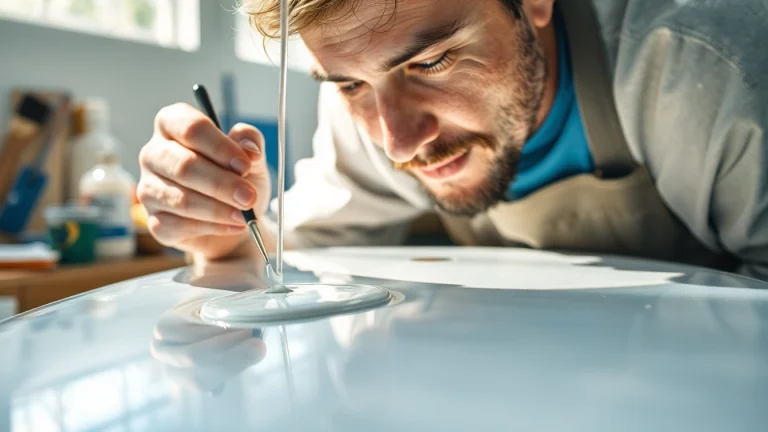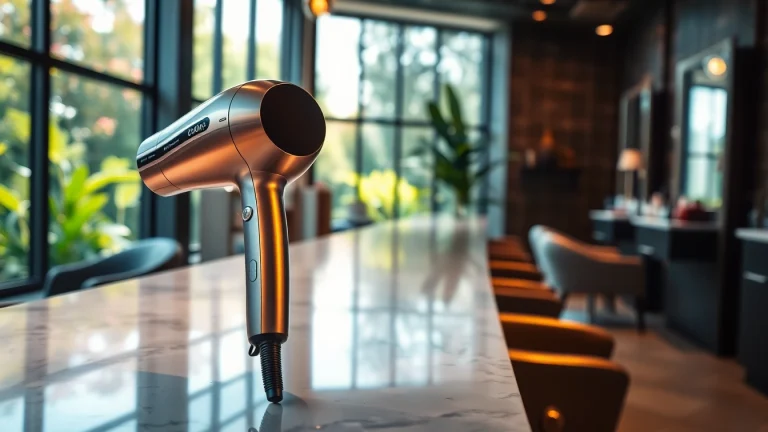
Maximizing Your Projects with High-Quality Laminating Resin: Applications and Techniques
Understanding Laminating Resin and Its Importance
The use of laminating resin is crucial in various industries, ranging from boat building to automotive manufacturing. This specialized type of resin is designed to bond layers of materials, providing strength and durability in finished products. As projects become increasingly sophisticated, understanding the properties, advantages, and applications of laminating resin is essential for achieving the best outcomes.
What is Laminating Resin?
Laminating resin is a synthetic polymer used primarily in the composite materials industry to bond fiberglass or other substrates together. The resin can be either polyester or epoxy-based, each serving specific roles in the manufacturing and construction processes. Laminating resin typically has distinct properties such as low viscosity, excellent adhesion capabilities, and mechanical strength, making it ideal for applications where lightweight and strong materials are required.
Benefits of Using Laminating Resin
- Strength and Durability: Laminating resin provides high strength to composite materials, ensuring longevity and resistance to wear and tear.
- Lightweight Design: Laminating resin allows creators to produce lightweight structures without compromising on integrity, a crucial factor in aerospace and marine applications.
- Versatility: It can be used in a wide range of applications, including boat building, automotive parts, and sporting goods, enhancing the utility of the resin in multiple industries.
- Ease of Application: The application methods for laminating resin can vary from hand lay-up to automated processes, accommodating different levels of production needs.
Common Applications of Laminating Resin
The versatility of laminating resin allows it to be applied in numerous fields:
- Marine Industry: It is commonly used in the construction of boats and other watercraft due to its excellent waterproofing properties.
- Aerospace Manufacturing: Laminating resin contributes to the creation of lightweight yet strong components critical for aircraft.
- Automotive Components: It is used for parts that require high strength-to-weight ratios, such as body panels and interior structures.
- Sports Equipment: From surfboards to bicycles, laminating resin is prevalent in creating high-performance sports gear.
Types of Laminating Resin Available
Polyester Laminating Resin Explained
Polyester laminating resin is one of the most common types available. It is often used in marine applications and is known for its good adhesion and quick curing properties. This type of resin has a relatively low cost, making it an attractive option for many projects. Its composition generally includes a mixture of unsaturated polyester resin and a hardening catalyst, which begins the curing process.
Epoxy Laminating Resin Overview
Epoxy laminating resin, while often more expensive than polyester, offers superior strength, durability, and chemical resistance. It is frequently employed in high-performance applications where the structural integrity is paramount. The curing process can take longer than polyester, but this type of resin often results in stronger bonds and less shrinkage during hardening.
Comparing Different Laminating Resin Types
When comparing polyester and epoxy laminating resins, here are some key differentiators:
| Feature | Polyester Laminating Resin | Epoxy Laminating Resin |
|---|---|---|
| Curing Time | Faster curing time | Longer curing time, but stronger bonds |
| Cost | Lower cost | Higher cost |
| Strength | Good strength, but inferior to epoxy | Very high strength and durability |
| Available Colors | Various colors available | Generally clear, can be tinted |
| Application Method | Low viscosity allows for easy application | Thicker consistency; may require specific techniques |
Essential Techniques for Working with Laminating Resin
Preparation and Safety Procedures
Working with laminating resin requires stringent safety measures:
- Personal Protective Equipment (PPE): Gloves, goggles, and respirators should be worn to prevent skin contact and inhalation of fumes.
- Ventilation: Ensure that the workspace is well-ventilated to reduce the concentration of harmful vapors.
- Material Preparation: Make sure surfaces are clean, dry, and free from dust or grease to ensure a strong bond.
- Mixing: Follow the manufacturer’s instructions for resin and hardener ratios; improper mixing can lead to curing issues.
Application Methods for Laminating Resin
There are various methodologies to apply laminating resin:
- Hand Lay-Up: The most common technique where the resin is applied directly on the fabric layers by hand.
- Spray-Up: Suitable for larger-scale applications, where resin is sprayed onto fabric, reducing labor time.
- Vacuum Bagging: This method involves sealing the laminate in a vacuum environment to ensure an even distribution of resin.
- Infusion: Involves drawing resin into the laminate through a vacuum, achieving high-quality finishes.
Post-application Treatments and Finishing
Once the application is complete, curing is vital. Depending on the type of resin, post-application treatments may include:
- Curing Process: Ensure that the laminate cures completely as per the manufacturer’s recommendations to achieve full strength.
- Sanding and Finishing: Once fully cured, sanding may be necessary to achieve a smooth surface before painting or sealing.
- Quality Control: Conduct thorough inspections to ensure that the lamination process was successful and that the final product meets specifications.
Challenges and Solutions in Laminating Resin Projects
Common Issues When Using Laminating Resin
Projects involving laminating resin can encounter several common challenges:
- Poor Adhesion: Often caused by inadequate surface preparation or improper mixing ratios.
- Bubbles and Voids: Can occur due to air entrapment during the application process.
- Uneven Curing: Temperature fluctuations or mixed ratios can lead to areas curing at different rates, compromising integrity.
Tips for Achieving Strong Bonding
To ensure a successful bonding process with laminating resin, consider the following:
- Surface Treatments: Use appropriate surface treatments such as sanding or chemical cleaning to enhance bonding.
- Resin/Hardener Ratio: Always adhere to the recommended mixing ratios to maintain the strength and durability of the laminate.
- Environmental Control: Monitor ambient temperatures and humidity levels since they can greatly affect curing and adhesion.
Expert Advice for Troubleshooting
If challenges arise, here is some expert advice for troubleshooting:
- Conduct a Test: Before large-scale application, perform a test run on a small area to evaluate results.
- Evaluate Conditions: If there are problems, assess the conditions like temperature, humidity, and application technique.
- Rectification Measures: For shallow bubbles, puncture and allow for deeper curing, whereas deeper issues might require patching or redoing the lamination.
Enhancing Performance of Laminating Resin
How Temperature Affects Laminating Resin
Temperature plays a significant role in the performance of laminating resin. Higher temperatures may accelerate curing times, whereas lower temperatures can slow the curing process, causing potential problems with bond strength. It is critical to maintain optimal working temperatures as specified by the manufacturer to ensure the best results.
Storage Tips for Maintaining Laminating Resin Quality
To prolong the lifespan and efficacy of laminating resin, consider these storage practices:
- Airtight Containers: Store resin in sealed containers to prevent contamination and curing before use.
- Cool and Dark Place: Keep resin sheltered from direct sunlight and UV exposure as they can degrade the materials over time.
- Regular Checks: Periodically check the resin for changes in viscosity or odor, indicating possible degradation.
Evaluating the Performance of Your Laminating Resin
Post-application, it is essential to evaluate the performance of your laminating resin:
- Strength Testing: Conduct tensile tests to evaluate the strength and durability of the cured resin.
- Visual Inspection: Look for defects such as bubbles, separations, or discolorations that could indicate a problem with the application process.
- Feedback Loop: Collect data from end-users to understand how well the final product performs in practical applications, aiding in future improvements.


